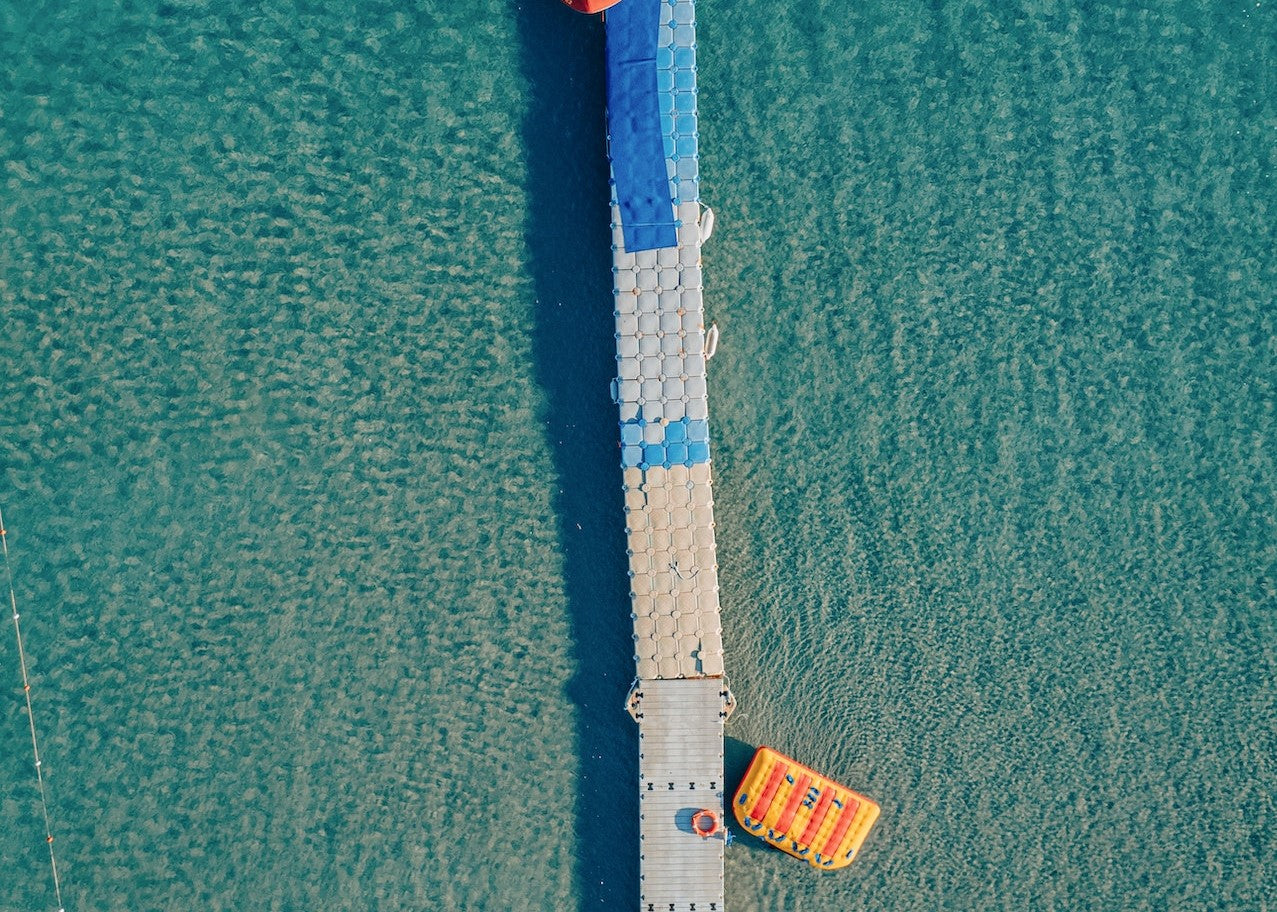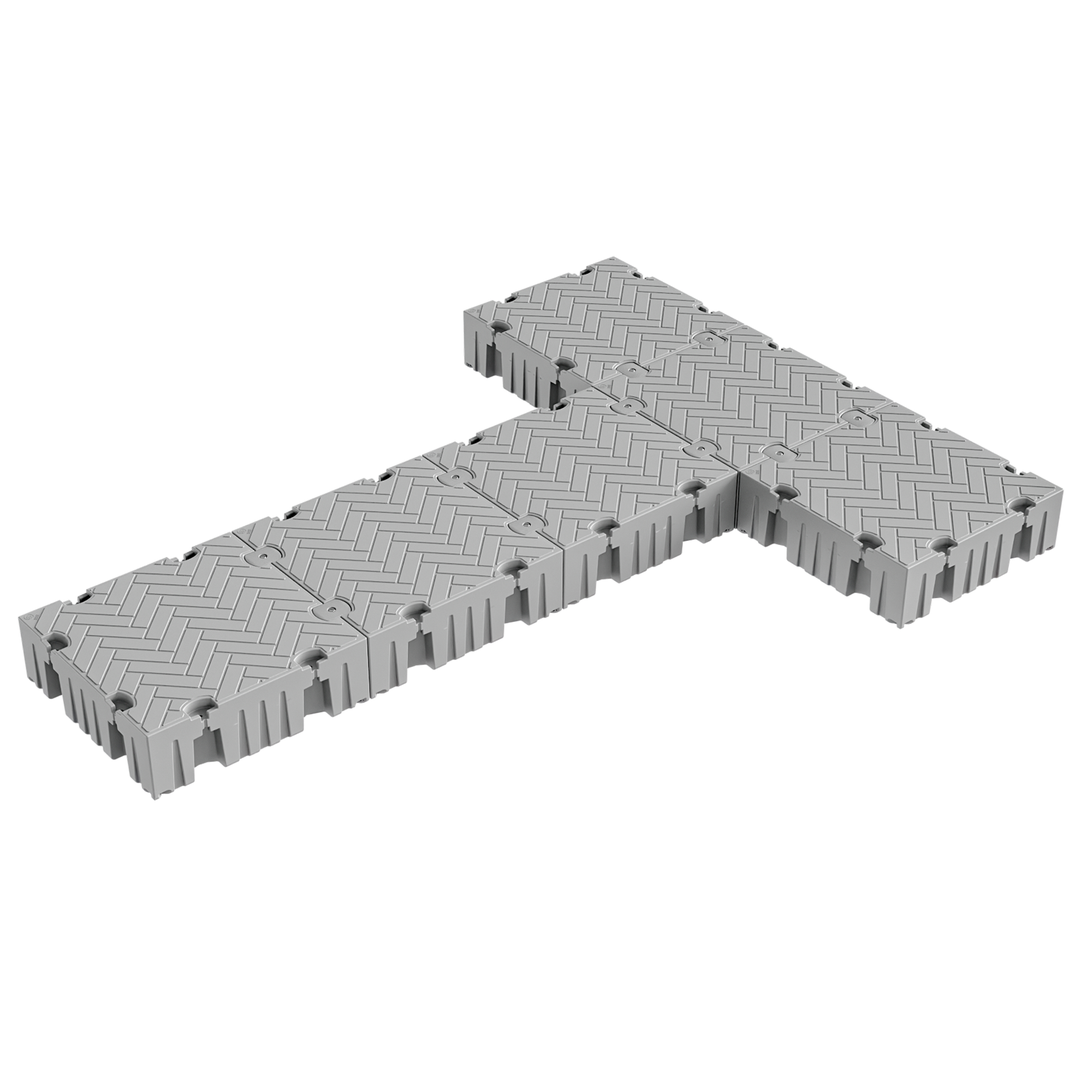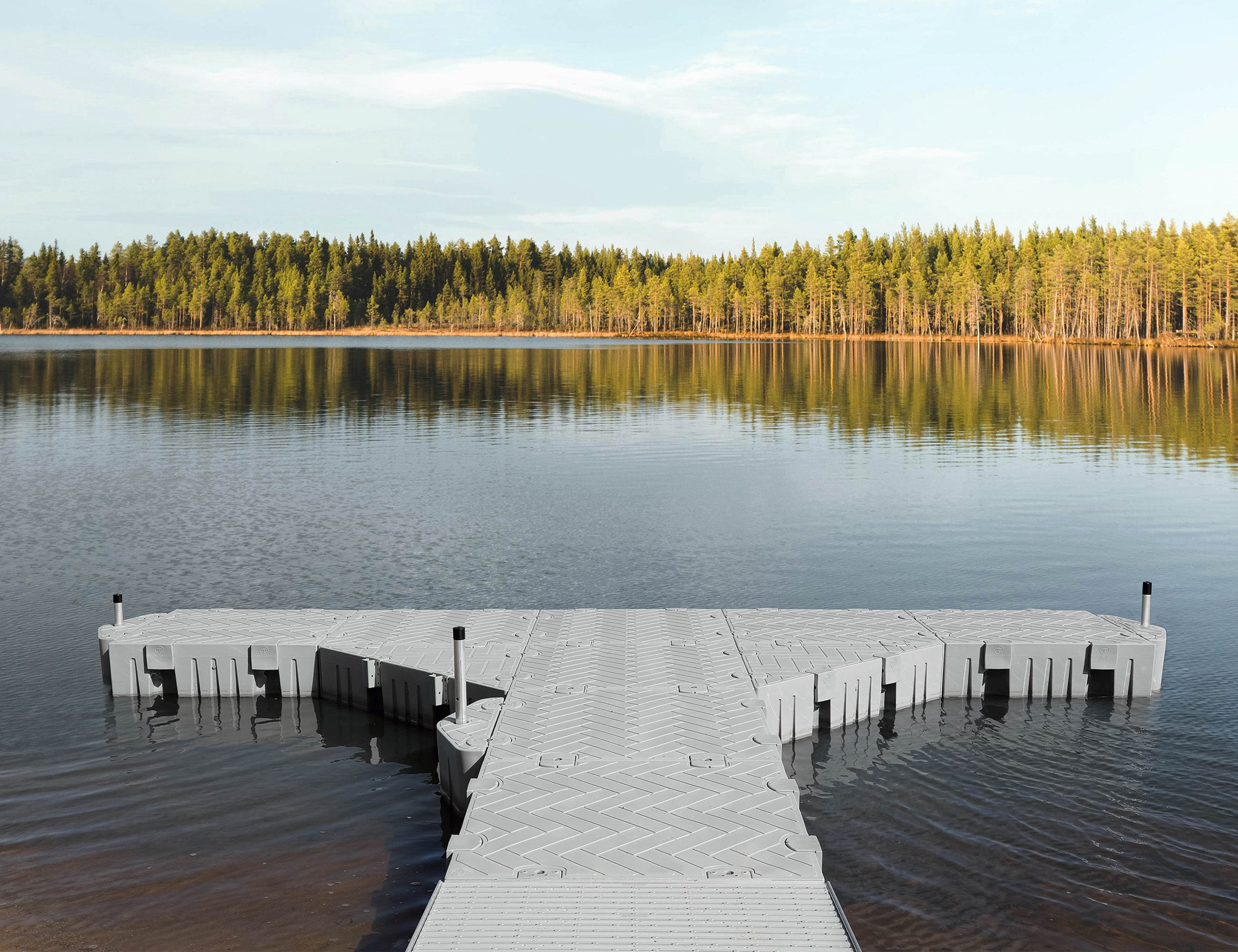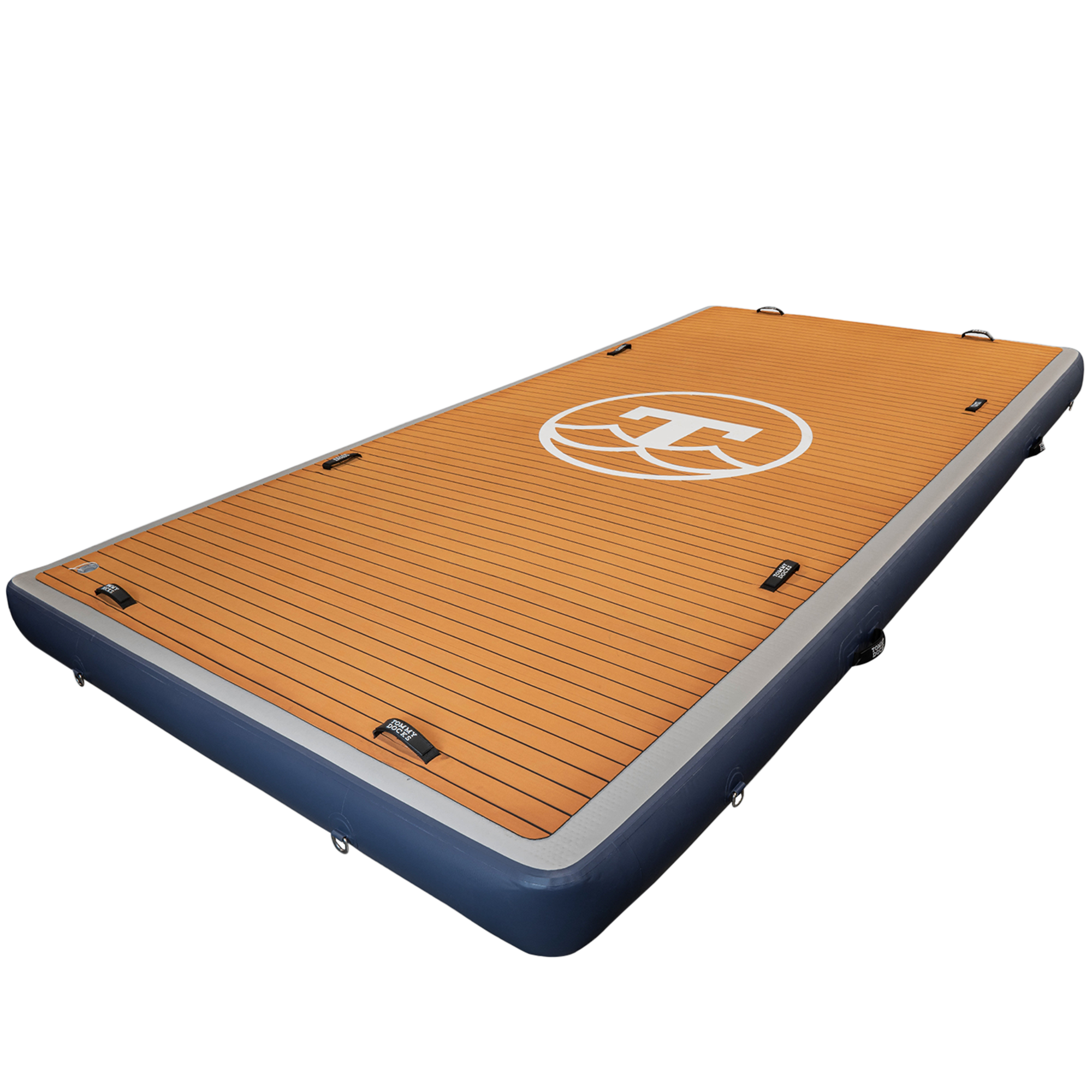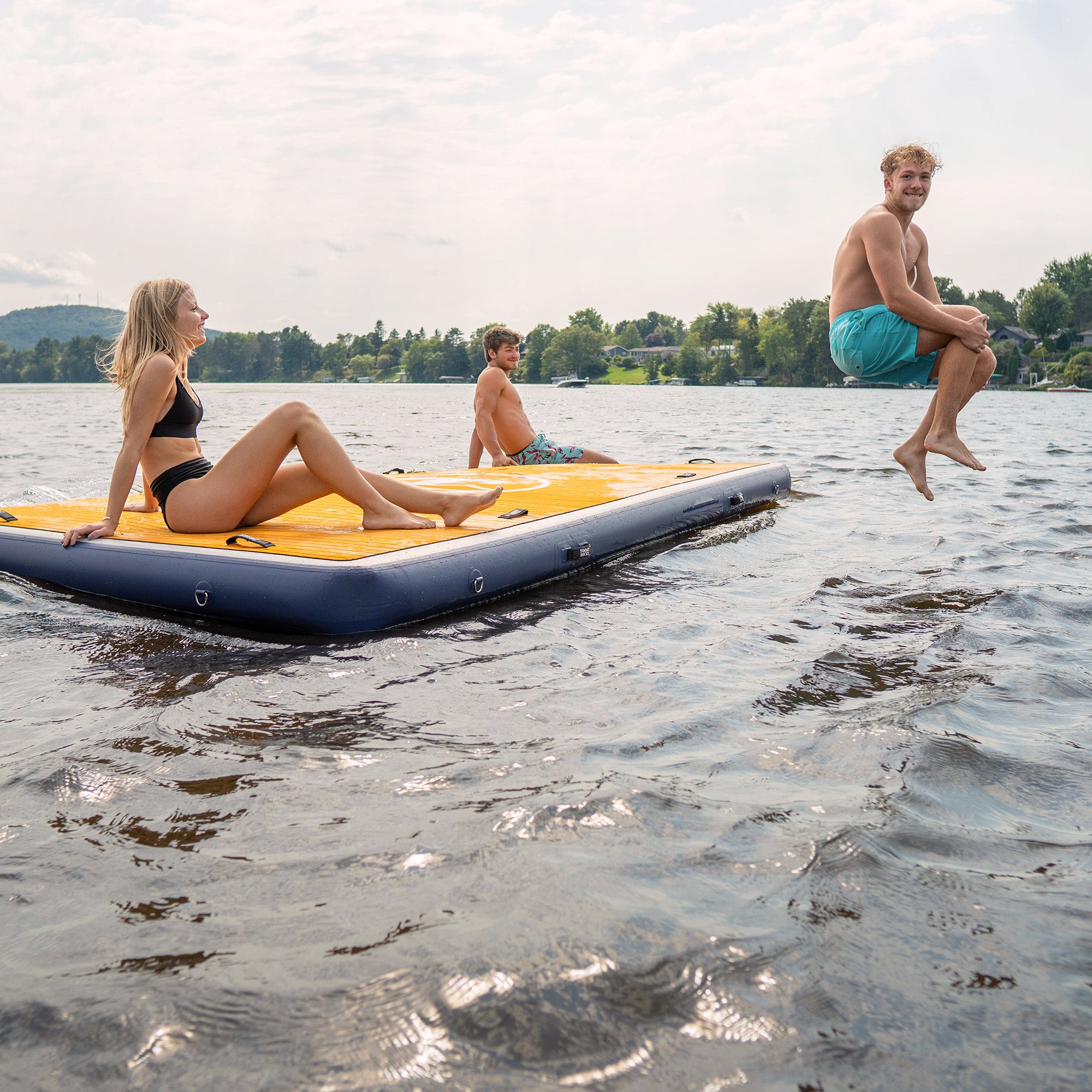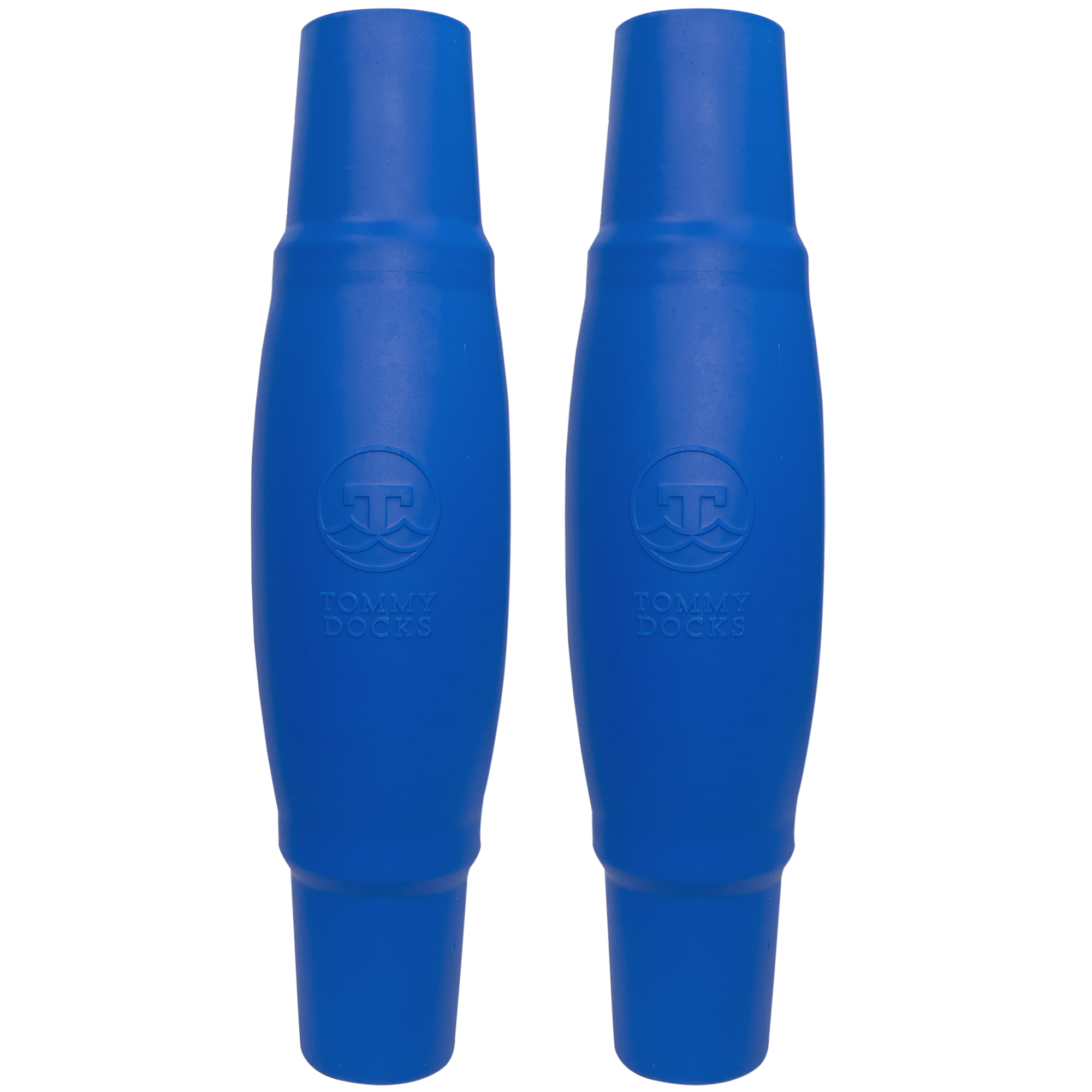From undeveloped pieces of land to multi-million dollar homes, waterfront property owners all over the US install floating docks.
Floating docks add functionality and value to a property – giving owners a perfect platform for lakeside recreation while boosting resale potential.
How do these multipurpose floating docks work? First, let’s discuss some more benefits of installing a floating dock.
Benefits of Floating Docks
Installing a floating dock on your property can facilitate a huge variety of water recreation, including swimming, fishing, lounging, boating, and more.
Floating docks are a worthy addition to any waterfront property because they are:
- Adaptable - Floating docks can adjust to changing water levels and endure harsh marine conditions.
- Reconfigurable - Depending on the brand of floating dock, you can buy individual sections of floating dock to build your perfect docking configuration or adjust as needed.
- Removable -
- Affordable - Floating docks offer waterfront property owners an affordable solution for getting a high-quality dock. If budget is a priority, you can start small with an 8’ Floating Dock Package and slowly add on to your dock.
- Durable - Again, depending on the brand, floating dock materials often offer long-lasting durability and low maintenance.
Now, how is a floating dock made, and how does it work?
Basic Components of a Floating Dock
Floating docks are designed to bob on the surface of the water. Unlike stationary or fixed docks, floating docks move up and down with the water level, making them ideal for bodies of water with inconsistent water conditions. Zooming in on the components of a floating dock will give the overall idea of how it works.
The general components of a floating dock include:
- Floats - High buoyancy floats keep the dock safely above water, even in choppy conditions.
- Deck - A deck creates a safe platform above the water to support walking, jumping, sitting, and more. Some floating docks makers combine the floats and decking into one piece.
- Pipes or piling - Pipes or pilings are used to secure the floating dock to the shoreline and keep it in place. Typically these pipes have auger feet, which are dug into the ground to stabilize the dock. They also have pipe guides to allow the dock to move up and down with the water level.
- Anchor and line - Floating docks may use an anchor in addition to pilings or instead of pilings to hold the dock in place and add stability. You’ll need a strong line to attach the anchor to the dock securely.
- Hardware and connectors - Non-corrosive hardware and connectors are needed to fasten dock sections together.
- Accessories - Additional components like lights, cleats, bumpers, ladders, and other accessories can be added to boost the functionality and aesthetic of the dock.
Which floating dock should be on your radar?
Flexx Floating Dock
Tommy Docks’ market-disrupting floating dock, called Flexx, is a perfect solution for all DIY dock builders who want a high-value solution. Our Flexx floating docks combine super buoyant floats and attractive, durable decking into one top-performing piece.
Take a look at our step-by-step floating dock assembly instructions to see how it works, or shop our entire Flexx catalog to learn more about this next-level floating dock.

